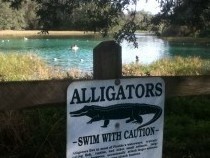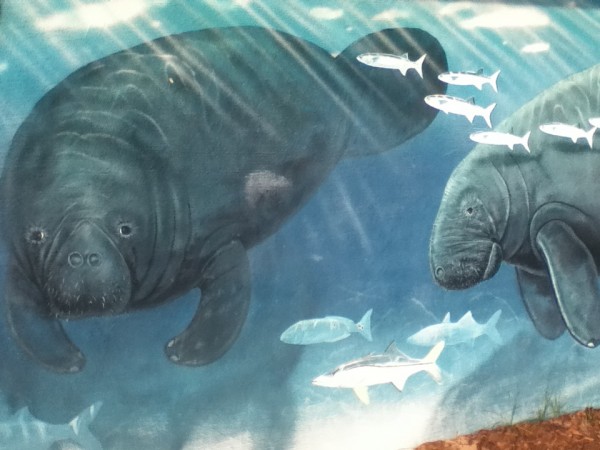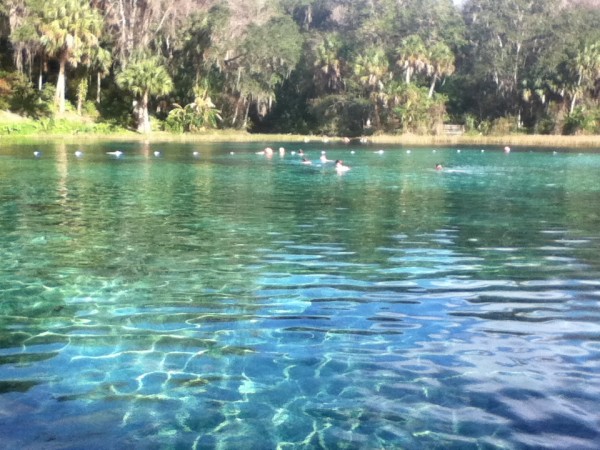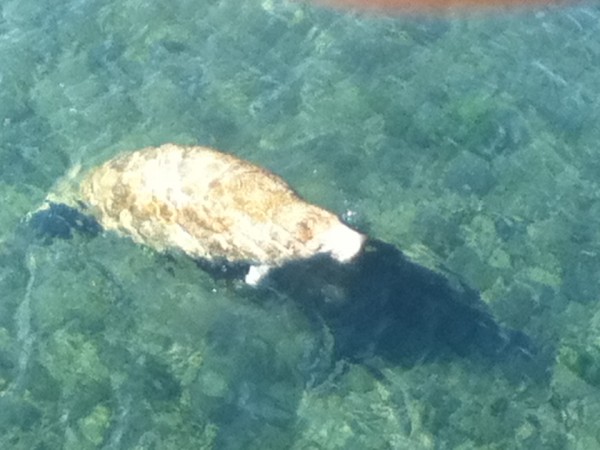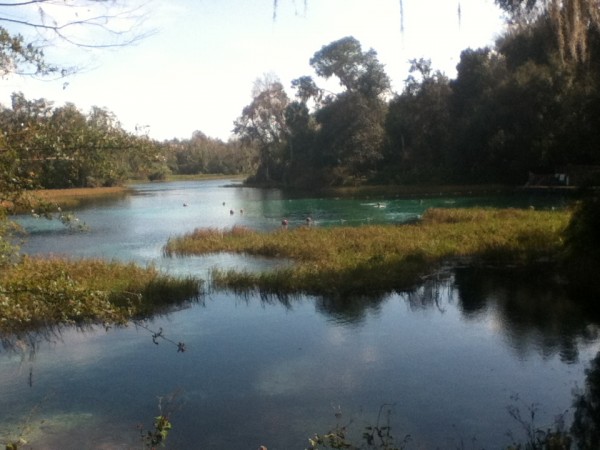When I thought of Florida, I used to immediately remember the Jimmy Buffet lyrics, “People who retire to Florida are wrinkled and they lean on a crutch”. Yep, there are a lot of old farts here, and they are out there in droves as volunteers in the State Parks, providing the cleanest campgrounds, most informational tours, and a bounty of travel ideas. They are also out there on bikes, roller blades, kayaks, and tennis courts…hey those wrinkled old farts are us! …there are a lot of ways to get old and it’s fun when you do it with the right people….
With over 600 springs in Florida, we have been visiting several to see manatees. So far the Edward Ball Wakulla Springs boat tour (Blog: Gulf Coast 1/9/13) is the winner as there were lots of manatees up close and personal. We only sited one baby at Manatee Springs, and none at Hermonassa Springs and Rainbow Springs. However, these springs have amazing designated human swimming areas. Manatee Springs floods with 600 million gallons of water a day so it is pristine, but the real beauty is Rainbow Springs, with “only” 400 million gallons a day….
Swimming in 70 degree freshwater lagoons fringed with palms is pure magic, only dimmed by some anxiety about swimming with gators. Advised to “take caution” and report any gator “approaches”, I wonder if my report will be a scream as I am dragged under? I lower my risk by swimming near small children, and hope my big fat white body looks just like a manatee. Both gators and manatees like to park themselves over the bubbles from the spring releases for a “jet spa massage” and otherwise take no interest in each other.
The West Indian Manatee population in Florida is challenged by speed boats (and have the scars to prove it), red tide, and water colder than 68 degrees, which makes their digestive abilities cease to function. These slow-moving mammals are now “Vulnerable” as opposed to “Endangered” in part because they can tolerate changes in salinity, and have learned to swim up rivers from the Gulf to these warm spring lagoons. However, other members of the sirenian family, dugongs and sea cows, have become extinct. Female Manatees can grow to 16 feet and 3500 pounds. They have one calf, after a 14 month gestation, and stay together with the calf for two years. Calves are born about 4 feet long and 60 pounds in weight, and can begin to eat river vegetation immediately. Manatee molars wear down from the abrasive plant foods, so they have “marching molars” that replace the worn ones. As they eat 10-15% of their body weight daily, this is a great survival tool. As Darwin said, “Biology is destiny”.

